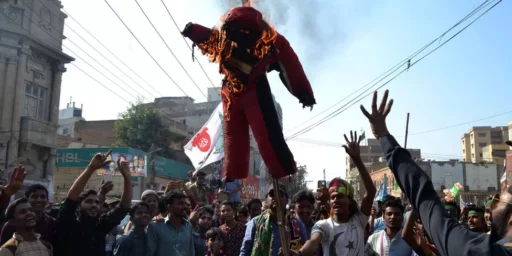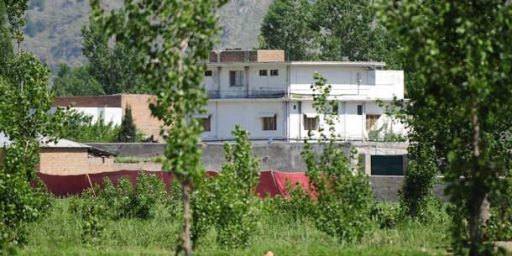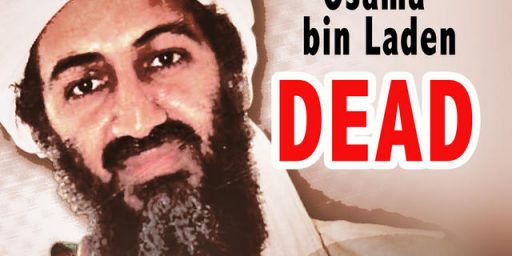New Generation of Leaders Is Emerging for Al Qaeda
NYT – New Generation of Leaders Is Emerging for Al Qaeda [RSS]
A new portrait of Al Qaeda’s inner workings is emerging from the cache of information seized last month in Pakistan, as investigators begin to identify a new generation of operatives who appear to be filling the vacuum created when leaders were killed or captured, senior intelligence officials said Monday. Using computer records, e-mail addresses and documents seized after the arrest of Mohammed Naeem Noor Khan last month in Pakistan, intelligence analysts say they are finding that Al Qaeda’s upper ranks are being filled by lower-ranking members and more recent recruits. “They’re a little bit of both,” one official said, describing Al Qaeda’s new midlevel structure. “Some who have been around and some who have stepped up. They’re reaching for their bench.”
While the findings may result in a significant intelligence coup for the Bush administration and its allies in Britain, they also create a far more complex picture of Al Qaeda’s status than Mr. Bush presents on the campaign trail. For the past several months, the president has claimed that much of Al Qaeda’s leadership has been killed or captured; the new evidence suggests that the organization is regenerating and bringing in new blood.
That’s hardly surprising. The questions that we need to answer are 1)What is the quality of the new leaders as contrasted with their predecessors? and 2) How long will they be able to find people willing to step in to leadership roles if the leaders are effectively targetted? My suspicion–and it is merely that–is that the new leaders aren’t as talented as the old ones but that the supply won’t run out any time soon.
The new picture emerged from interviews with two officials who have been briefed on some of the details of the intelligence and analytical conclusions drawn from the information on computers seized after Mr. Khan’s arrest. But they did not identify the more senior Qaeda leaders, and they said it was not yet clear to what extent Osama bin Laden still exercised control over the organization, either directly or through his chief deputy, Ayman al-Zawahiri.
Officials say they still do not have a clear picture of the midlevel structure that exists between Mr. Khan, who appeared to be responsible for communications but not operations, and the upper echelons of Al Qaeda. The new evidence suggests that Al Qaeda has retained some elements of its previous centralized command and communications structure, using computer experts like Mr. Khan to relay encrypted messages and directions from leaders to subordinates in countries like Britain, Turkey and Nigeria. In the past, officials had a different view of Al Qaeda. After the American-led war in Afghanistan, most American counterterrorism analysts believed that the group had been dispersed and had been trying to re-form in a loosely affiliated collection of extremist groups.
This has been true for years. Indeed, bin Laden’s role has always been as a coordinator of disparate groups. Al Qaeda is “the base” of an Islamic insurgent movement, not a discrete terrorist organization like HAMAS or Hezbollah.
It appears that Al Qaeda is more resilient than was previously understood and has sought to find replacements for operational commanders like Khalid Shaikh Mohammed, Abu Zubaydah and Walid Muhammad Salih bin Attash, known as Khallad, all of whom have been captured. Mr. bin Laden and Mr. Zawahiri are believed to be in hiding in the region along the border between Afghanistan and Pakistan. In July, when American officials announced that Al Qaeda intended to strike inside the United States this year, they said that they believed Mr. bin Laden was directing the threats.
*** Mr. bin Laden’s precise role in the leadership of his organization remains murky. After the Sept. 11 attacks he did not appear to take an active leadership role in formulating a specific plan, as he had in the Sept. 11 plot, administration officials have said. At times he has appeared to be struggling to maintain his primacy as the leader of the network through messages exhorting his followers to carry out operations against American targets. But in recent months, there has been evidence leading some analysts to conclude that Mr. bin Laden may have been able to maintain greater control over planning for attacks.
Certainly, it has to be harder for bin Laden to exert control than it was before 9/11, simply because his communications are being monitored more closely and he is constantly on the run trying to avoid capture. Killing or capturing him would be a huge blow to the organization because he’s such an iconic figure. No one really thinks it would cripple it, however.






There is always someone waiting in the wings to step into the shoes of the captured or the killed. Sometimes, I wonder if this is a losing battle. I probably won’t see it won in my lifetime, and that is what is depressing, ‘the thought of living with this war on terrorism, for the rest of my lifetime’.
And was not this the argument against the use of the so-called ‘peace dividend’? Once the Soviets were comparatively tamed, other problems requiring at least the same level of attention would leap to the fore.
Which, as we find, is exactly what occurred.
Now there’s the spirit that got us to the moon.